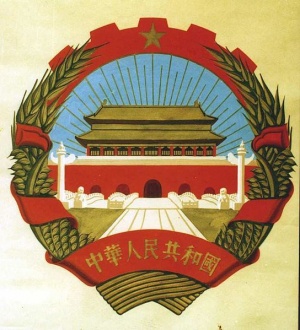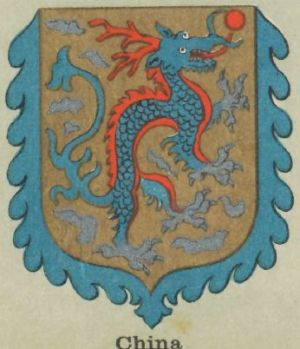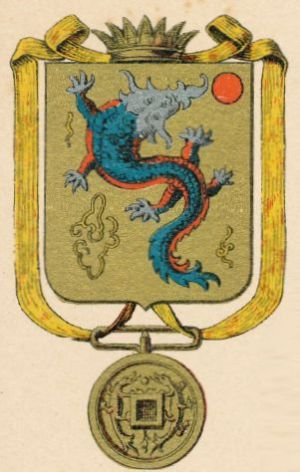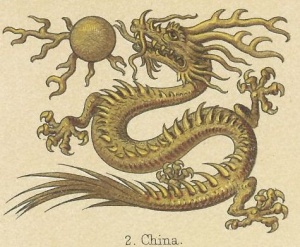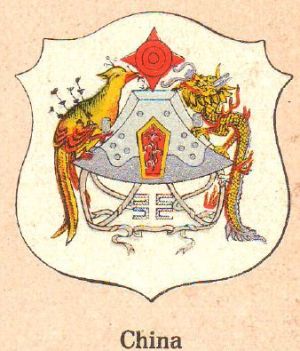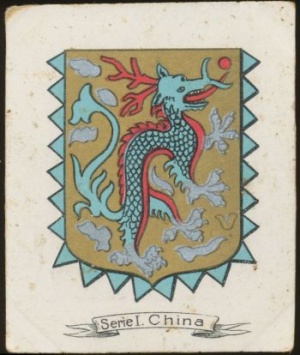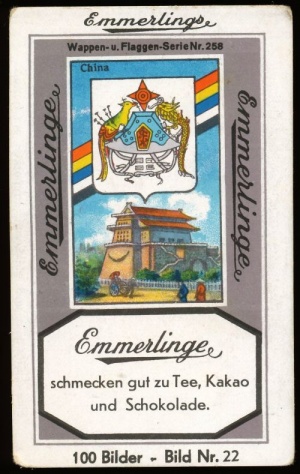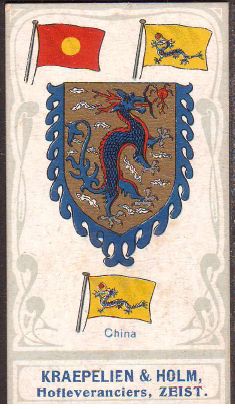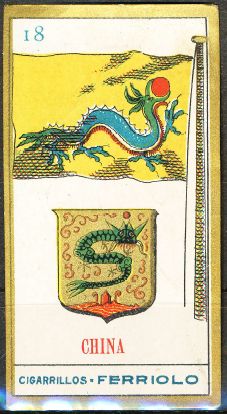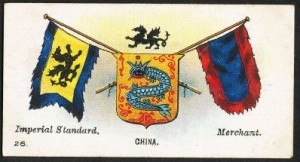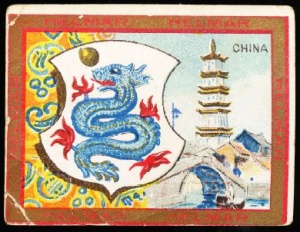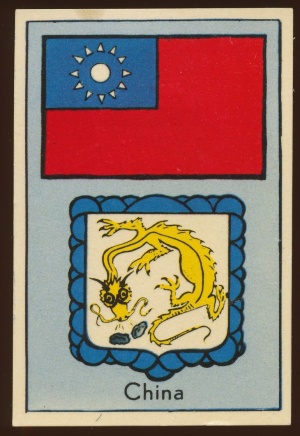National Arms of China: Difference between revisions
Knorrepoes (talk | contribs) |
Knorrepoes (talk | contribs) |
||
| Line 20: | Line 20: | ||
Before this symbol was approved a number of proposals were received : | Before this symbol was approved a number of proposals were received : | ||
Proposals by the China Central Academy of Fine Arts: | Proposals by the China Central Academy of Fine Arts ([http://www.cnxsgy.com/inc/news_view.asp?id=213 source]): | ||
<br> | <br> | ||
* September 25, 1949 | * September 25, 1949:<br> | ||
[[File:cn-natp1.jpg|center|Proposals for the {{PAGENAME}}]] | [[File:cn-natp1.jpg|center|Proposals for the {{PAGENAME}}]] | ||
* June 15, 1950 :<br> | * June 15, 1950 :<br> | ||
| Line 30: | Line 30: | ||
<br> | <br> | ||
* October 30, 1949 :<br> | * October 30, 1949 :<br> | ||
[[File:cn-natp3.jpg|center|Proposals for the {{PAGENAME}}]] | [[File:cn-natp3.jpg|300 px|center|Proposals for the {{PAGENAME}}]] | ||
* June 17, 1950:<br> | * June 17, 1950:<br> | ||
[[File:cn-natp4.jpg|300 px|center|Proposals for the {{PAGENAME}}]] | [[File:cn-natp4.jpg|300 px|center|Proposals for the {{PAGENAME}}]] | ||
Revision as of 07:54, 27 September 2017
| Heraldry of the World Civic heraldry of China |
NATIONAL ARMS OF CHINA
Origin/meaning
China does not use a heraldic national symbol, but the above emblem.
The national emblem of China was officially adopted on September 20, 1950.
The arms show a red disc with a representation below of the Tiananmen, the entrance gate of the Forbidden City as seen from the Tiananmen Square in Beijing and five stars above. The outer border is composed of sheaves of wheat and the inner border of sheaves of rice, with a cog-wheel at the center of the bottom portion of the border.
These elements taken together symbolise the revolutionary struggles of the Chinese people since the May Fourth Movement and the coalition of the proletariat which succeeded in founding the People's Republic of China.
Before this symbol was approved a number of proposals were received :
Proposals by the China Central Academy of Fine Arts (source):
- September 25, 1949:
- June 15, 1950 :
Proposals by Tsinghua University:
- October 30, 1949 :
- June 17, 1950:
Historical/imperial arms
Historically China also did not use heraldic arms, but from the late 19th century onwards until 1950, most often the Imperial Dragon has been placed on a shield to create European-style heraldic arms. Some examples are shown below:
| The arms in a book from 1875 |
The arms in a book from 1888 |
| The arms by Ströhl, +/- 1900 |
The arms in a book from 1925 |
| The arms in the Abadie albums (1930s) |
The arms in a German album, 1905/10 |
| The arms on a German card, 1920s |
The arms on a German postcard, 1900s |
| The arms on a Dutch trade card (1910s) |
The arms on a Uruguayan cigarette card |
| The arms on a British cigarette card |
The arms on a US cigarette card |
| The arms on a British cigarette card |
The arms on a Dutch card |
If this text appears, it means that background information is available, but that I have not yet had the time to add the information on these arms. Just [|mail me with the name of the town in the subject !] and I will add all information that I have !
Contact and Support
Partners:
Your logo here ?
Contact us
© since 1995, Heraldry of the World, Ralf Hartemink 
Index of the site
[[Category:China]



